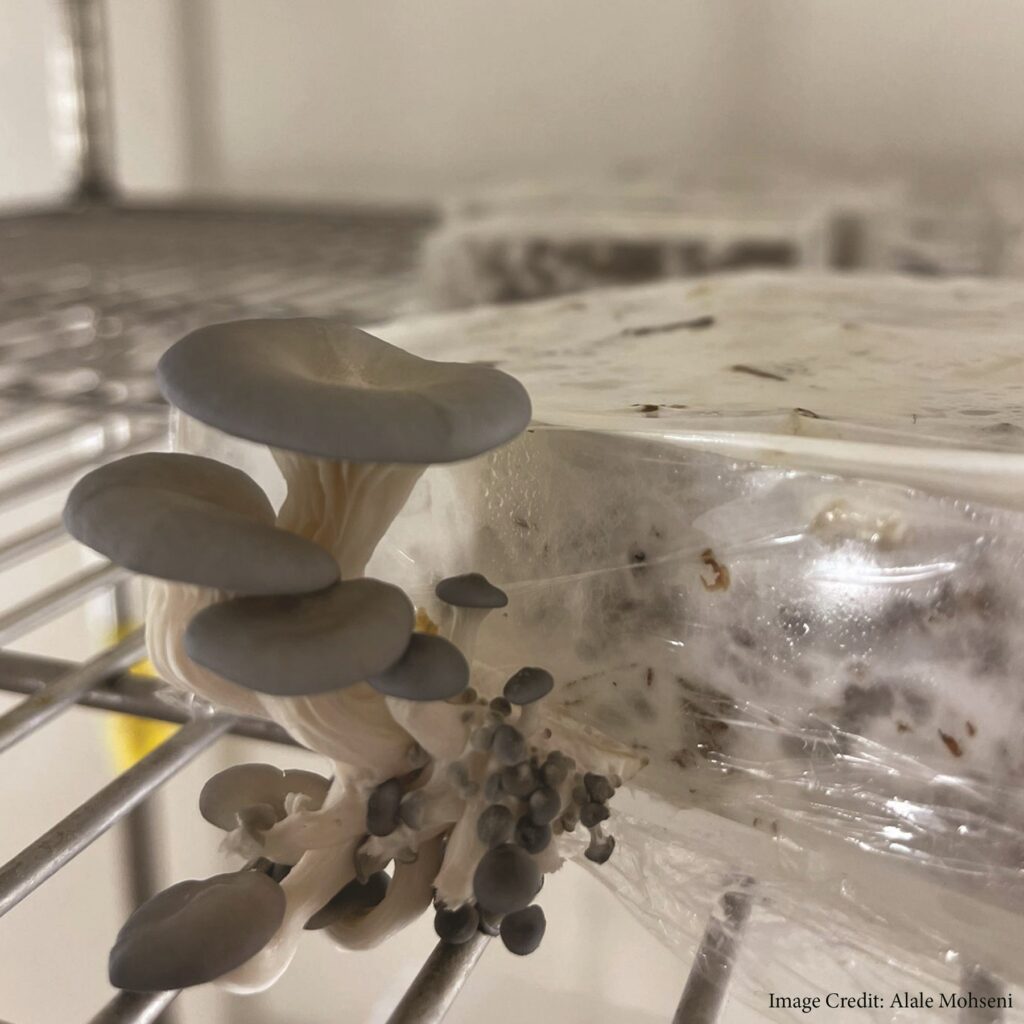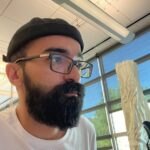
Description:
Required Skills: Enthusiasm to work with uncertain materials
Required Software: N/A
Required Hardware: N/A
Maximum number of participating students: 100
Bio-based materials have found their way to design and fabrication in the architectural context in recent years. Fungi-based materials, especially mycelium-based composites, are a group of these materials of growing interest among scholars due to their lightweight, compostable and regenerative features. However, after about a decade of introducing this material to the architectural community, the proper ways of design and fabrication with this material are still under investigation. In this workshop, we go through the introduction of this material, the methods that scholars and designers have chosen to form this material, and the novel techniques to do so. Working with such a novel material requires us to go through the trifold cycle of Material, Geometry, and Technique. The inherent uncertainty of this material informs the geometries and techniques that we can use, and these forms and methods update us on how to modify the material. This circular design method opens several opportunities to design and fabricate (and experience and learn) with (and from) a bio-based material.
مصالح نوین ساختمانی مبتنی بر موجودات زنده در سالهای اخیر مورد توجه طراحان و معماران قرار گرفته است. یکی از این نوع مصالح، کامپوزیتهای مایسلیومی هستند.این مصالح سبک، زیستتجزیهپذیر و پایدار از ریشهی خانوادهی قارچ و پسماندهای کشاورزی یا اداری بدست میآید. در سالهای اخیر، تلاش فراوانی برای استفاده از این مصالح در صنایع مختلف از جمله صنعت ساختمان انجام شده است. هرچند، به دلیل تازگی این مصالح و عدم قطعیت ذاتی بدلیل کار با یک موجود زنده، بسیاری از راه های استفاده از این مصالح هنوز دست نخورده باقی ماندهاند. مثل بسیاری دیگر از مصالح و فنون جدید، برای پیدا کردن راههای شکلدهی به این مصالح، حرکت بین مصالح، هندسه و فن شکلدهی راهحل اولیهی ما برای یافتن پاسخ به سوال “چگونه از این مصالح بهترین استفاده را کنیم؟” خواهد بود. در این ورکشاپ سه روزه، در کنار هم، با این مصالح آشنا شده، کارهای قبلی انجام شده با آن را بررسی میکنیم، و در نهایت با هم برای شکلدهی این مصالح به پایدارترین حالت ممکن با امکانات امروزی تلاش خواهیم کرد.

Schedule:
timezone: (GMT -5:00) Eastern Time (US & Canada), Bogota, Lima| Start time | End time | Description |
|---|---|---|
| 2022-07-01 - 09:00 | 2022-07-01 - 00:00 | |
| 2022-07-02 - 09:00 | 2022-07-02 - 00:00 | |
| 2022-07-03 - 09:00 | 2022-07-03 - 00:00 |
Instructors:
 |
Ali Ghazvinian | I am a civil and architectural engineer interested in integrative design among different disciplines. My research interests lie between biodesign, material studies, computational design, and digital fabrication. After finishing my Bachelor’s and Master’s studies at the University of Tehran, Iran, I began my Ph.D. studies at Penn State University in 2018. |
 |
BehzadModanloo | Behzad Modanloo holds a master's degree in architectural technology in the field of bionics, from University of Tehran. During his study, he researched several types of materials for architectural purposes which led to building some research pavilions. By having a passion for material-driven design, he worked on "utilization of structural capabilities of mycelium-based composite (MBC) in the design and construction of temporary residence" for his master thesis. His ultimate goal is to find the best way to apply this material for architectural purposes, and according to his research, he feels that 3D printing in various scales can bring him closer to this goal. |
 |
Alale Mohseni | I am a first-year MS in Architecture student at Penn State, Design Computing cluster. My research focus at ForMat Lab (Research lab on material computation+computational making) is on developing material recipes and fabrication protocols for robotic 3D printing of mycelium-based composites. I am investigating the use of waste cardboard and paper as substrates for growing mycelium-based composites and 3D printing architectural components with robotic paste extrusion. |
 |
Ali_Baghi | Ali Baghi is a research assistant and MS student at the Pennsylvania State University focusing on computational design and digital fabrication. His major areas of research include automation in construction, adjustable molds, and adaptive fabrication techniques; however, he is currently focusing on 3D Concrete Printing (3DCP) in his master’s studies. He is also a member of the Additive Construction Lab (AddConLab) at Penn State, where he is trying to address the current challenges of additive manufacturing with concrete. He has been involved in interdisciplinary research projects published in the journal and conference proceedings including the International Journal of Architectural Computing (IJAC), ACADIA, eCAADe, and SIGraDi. |
 |
farzaneho | Farzaneh Oghazian is a Ph.D. candidate at the Stuckeman Center for Design Computation at Penn State University. Her research focuses on developing computational methods to enhance the implementation of knits as materials for architectural applications. Farzaneh is currently a research assistant at SOFTLAB@PSU, doing research on the large-scale application of knitted textiles under supervision of Dr. Felecia Davis. She also is affiliated with the Building Design Group at Penn State and does research on optimization and developing machine learning models under the supervision of Dr. Nathan Brown. Her collaborative research work has gained recognition in the form of the SOM Foundation Prize 2021 for MycoKnit and the exhibition of Black Flower Antenna at the Museum of Modern Art, New York 2021 |
Disclaimer:
All workshops will accept 100 applications MAX.
